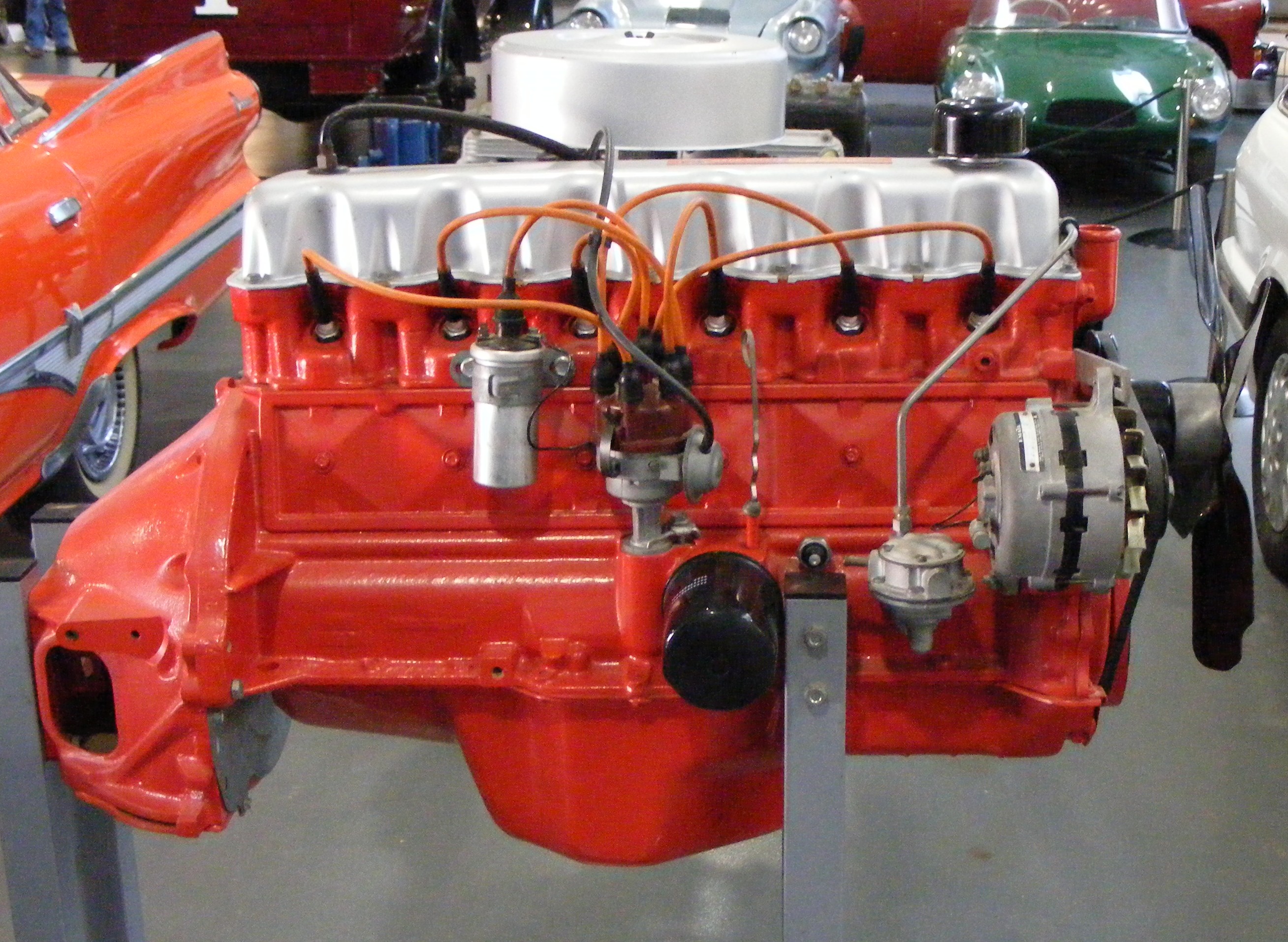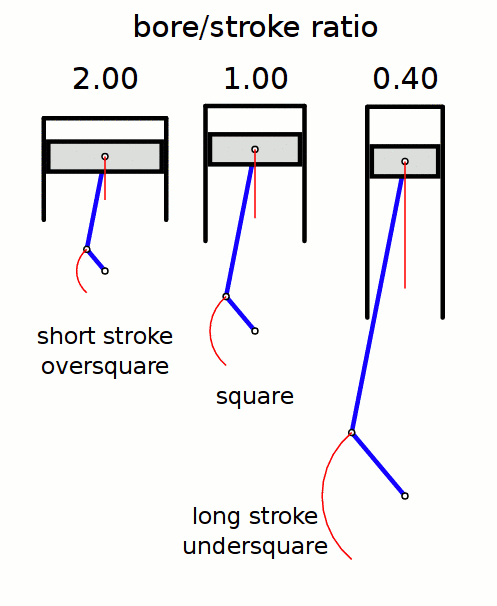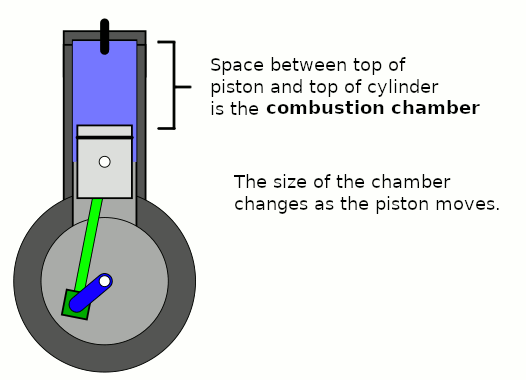|
Chrysler Hemi-6 Engine
The Chrysler Hemi-6 engine is a family of inline six-cylinder petrol engines produced by Chrysler Australia in three piston displacements and multiple configurations. Hemi-6 engines were installed in Australian-market Chrysler Valiants from 1970 through 1981. It was also installed in the Valiants closely related variants, the Chrysler VIP, the Chrysler by Chrysler & the Valiant Charger. Development and release Chrysler Corporation in the US had been working since 1966 on an inline 6-cylinder engine, called the D-engine, to replace the Slant 6 (G-engine) in Dodge trucks, but abandoned the effort after prototypes were built. This was Chrysler's first thin wall (lightweight) cast iron engine design. Chrysler Australia wanted a new six-cylinder engine for use in the Australian Chrysler Valiant, and so Chrysler USA sent a prototype engine to Chrysler Australia's engineers to continue developing the D-engine. The first variant was released for the 1970 model year in the VG-m ... [...More Info...] [...Related Items...] OR: [Wikipedia] [Google] [Baidu] |
Chrysler Australia
Stellantis (Australia and New Zealand) Pty Ltd (formerly FCA Australia), is the official Stellantis subsidiary in Australia and New Zealand, operating as distributor of Chrysler, Jeep, Dodge, Abarth, Alfa Romeo, Fiat and Leapmotor vehicles. However, there had previously been a "Chrysler Australia Ltd" which had operated as a vehicle manufacturer in Australia from 1951 until 1980, and was subsequently taken over by Mitsubishi Motors Australia. Establishment Chrysler Australia Ltd was established in June 1951The Macquarie Dictionary of Motoring, 1986, page 86 when the Chrysler Corporation acquired TJ Richards & Sons, Chrysler Dodge Distributors (Holdings) Pty Ltd,Max Gregory, King of the Road, TJ Richards, Coachbuilder, Restored Cars Number 202, Sept-Oct 2010, pages 10 to 15 a company which had been formed in 1935 by 18 independent distributors. During the 1950s and 1960s, Chrysler made a substantial investment in Australian manufacturing facilities. It consolidated assembly fr ... [...More Info...] [...Related Items...] OR: [Wikipedia] [Google] [Baidu] |
Dodge
Dodge is an American brand of automobiles and a division of Stellantis, based in Auburn Hills, Michigan. Dodge vehicles have historically included performance cars, and for much of its existence, Dodge was Chrysler's mid-priced brand above Plymouth. Founded as the Dodge Brothers Company machine shop by brothers Horace Elgin Dodge and John Francis Dodge in the early 1900s, Dodge was originally a supplier of parts and assemblies to Detroit-based automakers like Ford. They began building complete automobiles under the "Dodge Brothers" brand in 1914, predating the founding of the Chrysler Corporation. The factory located in Hamtramck, Michigan, was the Dodge main factory from 1910 until it closed in January 1980. John Dodge died from the Spanish flu in January 1920, having lungs weakened by tuberculosis 20 years earlier. Horace died in December of the same year, perhaps weakened by the Spanish flu, but the cause of death was cirrhosis of the liver. Their company was sold b ... [...More Info...] [...Related Items...] OR: [Wikipedia] [Google] [Baidu] |
Revolutions Per Minute
Revolutions per minute (abbreviated rpm, RPM, rev/min, r/min, or r⋅min−1) is a unit of rotational speed (or rotational frequency) for rotating machines. One revolution per minute is equivalent to hertz. Standards ISO 80000-3:2019 defines a physical quantity called ''rotation'' (or ''number of revolutions''), dimensionless, whose instantaneous rate of change is called ''rotational frequency'' (or ''rate of rotation''), with units of reciprocal seconds (s−1). A related but distinct quantity for describing rotation is ''angular frequency'' (or ''angular speed'', the magnitude of angular velocity), for which the SI unit is the radian per second (rad/s). Although they have the same dimensions (reciprocal time) and base unit (s−1), the hertz (Hz) and radians per second (rad/s) are special names used to express two different but proportional ISQ quantities: frequency and angular frequency, respectively. The conversions between a frequency and an angular frequency ... [...More Info...] [...Related Items...] OR: [Wikipedia] [Google] [Baidu] |
Compression Ratio
The compression ratio is the ratio between the maximum and minimum volume during the compression stage of the power cycle in a piston or Wankel engine. A fundamental specification for such engines, it can be measured in two different ways. The simpler way is the static compression ratio: in a reciprocating engine, this is the ratio of the volume of the cylinder when the piston is at the bottom of its stroke to that volume when the piston is at the top of its stroke. The dynamic compression ratio is a more advanced calculation which also takes into account gases entering and exiting the cylinder during the compression phase. Effect and typical ratios A high compression ratio is desirable because it allows an engine to extract more mechanical energy from a given mass of air–fuel mixture due to its higher thermal efficiency. This occurs because internal combustion engines are heat engines, and higher compression ratios permit the same combustion temperature to be reached wit ... [...More Info...] [...Related Items...] OR: [Wikipedia] [Google] [Baidu] |
Stroke Ratio
Stroke ratio, today universally defined as bore/stroke ratio, is a term to describe the ratio between cylinder bore diameter and piston stroke length in a reciprocating piston engine. This can be used for either an internal combustion engine, where the fuel is burned within the cylinders of the engine, or external combustion engine, such as a steam engine, where the combustion of the fuel takes place ''outside'' the working cylinders of the engine. Conventions The contemporary convention for describing the ''stroke ratio'' of a piston engine‘s cylinders is its ''bore/stroke'' ratio. ''Stroke/bore'' ratio is an obsolete expression dating to the early era of reciprocating engine development. Bore/stroke ratio The diameter of the cylinder bore is divided by the length of the piston stroke to give the ratio. Square, oversquare and undersquare engines The following terms describe the naming conventions for the configurations of the various bore/stroke ratio: Square A square ... [...More Info...] [...Related Items...] OR: [Wikipedia] [Google] [Baidu] |
Chrysler Hemi 245
FCA US, LLC, doing business as Stellantis North America and known historically as Chrysler ( ), is one of the " Big Three" automobile manufacturers in the United States, headquartered in Auburn Hills, Michigan. It is the American subsidiary of the multinational automotive company Stellantis. Stellantis North America sells vehicles worldwide under the Chrysler, Dodge, Jeep, and Ram Trucks nameplates. It also includes Mopar, its automotive parts and accessories division, and SRT, its performance automobile division. The division also distributes Alfa Romeo, Fiat, and Maserati vehicles in North America. The original Chrysler Corporation was founded in 1925 by Walter Chrysler from the remains of the Maxwell Motor Company. In 1998, it merged with Daimler-Benz, which renamed itself DaimlerChrysler but in 2007 sold off its Chrysler stake. The company operated as Chrysler LLC through 2009, then as Chrysler Group LLC. In 2014, it was acquired by Fiat S.p.A.; it subsequently operated as ... [...More Info...] [...Related Items...] OR: [Wikipedia] [Google] [Baidu] |
Main Bearing
A main bearing is a bearing in a piston engine which holds the crankshaft in place and allows it to rotate within the engine block. The number of main bearings per engine varies between engines, often in accordance with the forces produced by the operation of the engine. Main bearings are usually plain bearings or journal bearings, held in place by the engine block and bearing caps. Number of main bearings The number of main bearings is primarily determined by the overall load factor and maximum engine speed. Increasing the number of bearings in an engine will generally increase the size and cost of the engine, but also reduces bending stress and deflection caused by the distance from the crank pins to the nearest bearings. Most engines have at least two main bearings— one at each end of the crankshaft. Additional bearings may be located along the crankshaft, sometimes as many as one bearing per crank pin, as used on many modern diesel engines and petrol engines des ... [...More Info...] [...Related Items...] OR: [Wikipedia] [Google] [Baidu] |
Crankshaft
A crankshaft is a mechanical component used in a reciprocating engine, piston engine to convert the reciprocating motion into rotational motion. The crankshaft is a rotating Shaft (mechanical engineering), shaft containing one or more crankpins, that are driven by the pistons via the connecting rods. The crankpins are also called ''rod bearing journals'', and they rotate within the "big end" of the connecting rods. Most modern crankshafts are located in the engine block. They are made from steel or cast iron, using either a forging, casting (metalworking), casting or machining process. Design The crankshaft is located within the engine block and held in place via main bearings which allow the crankshaft to rotate within the block. The up-down motion of each piston is transferred to the crankshaft via connecting rods. A flywheel is often attached to one end of the crankshaft, in order to smoothen the power delivery and reduce vibration. A crankshaft is subjected to enormou ... [...More Info...] [...Related Items...] OR: [Wikipedia] [Google] [Baidu] |
Chrysler Hemi Engine
The Chrysler Hemi engine, known by the trademark Hemi or HEMI, refers to a series of high-performance American overhead valve V8 engines built by Chrysler with hemispherical combustion chambers. Three generations have been produced: the FirePower series (with displacements from to ) from 1951 to 1958; a famed race and street engine from 1964-1971; and family of advanced Hemis (displacing between since 2003. Although Chrysler is most identified with the use of "Hemi" as a marketing term, many other auto manufacturers have incorporated similar cylinder head designs. The engine block and cylinder heads were cast and manufactured at Indianapolis Foundry. During the 1970s and 1980s, Chrysler also applied the term ''Hemi'' to their Australian-made Hemi-6 Engine, and a 4-cylinder Mitsubishi 2.6L engine installed in various North American market vehicles. Design The main advantage of a hemi head engine over other head designs is power. In return, hemi head engines tend to ... [...More Info...] [...Related Items...] OR: [Wikipedia] [Google] [Baidu] |
Combustion Chamber
A combustion chamber is part of an internal combustion engine in which the air–fuel ratio, fuel/air mix is burned. For steam engines, the term has also been used for an extension of the Firebox (steam engine), firebox which is used to allow a more complete combustion process. Internal combustion engines In an internal combustion engine, the pressure caused by the burning air/fuel mixture applies direct force to part of the engine (e.g. for a piston engine, the force is applied to the top of the piston), which converts the gas pressure into mechanical energy (often in the form of a rotating output shaft). This contrasts an external combustion engine, where the combustion takes place in a separate part of the engine to where the gas pressure is converted into mechanical energy. Spark-ignition engines In spark ignition engines, such as petrol engine, petrol (gasoline) engines, the combustion chamber is usually located in the cylinder head. The engines are often designed such ... [...More Info...] [...Related Items...] OR: [Wikipedia] [Google] [Baidu] |
Overhead Valve Engine
An overhead valve engine, abbreviated (OHV) and sometimes called a pushrod engine, is a piston engine whose valves are located in the cylinder head above the combustion chamber. This contrasts with flathead (or "sidevalve") engines, where the valves were located below the combustion chamber in the engine block. Although an overhead camshaft (OHC) engine also has overhead valves, the common usage of the term "overhead valve engine" is limited to engines where the camshaft is located in the engine block. In these traditional OHV engines, the motion of the camshaft is transferred using pushrods (hence the term "pushrod engine") and rocker arms to operate the valves at the top of the engine. However, some designs have the camshaft in the cylinder head but still sit below or alongside the valves (the Ford CVH and Opel CIH are good examples), so they can essentially be considered overhead valve designs. Some early intake-over-exhaust engines used a hybrid design combining eleme ... [...More Info...] [...Related Items...] OR: [Wikipedia] [Google] [Baidu] |
Stirling Moss
Sir Stirling Craufurd Moss (17 September 1929 – 12 April 2020) was a British racing driver and sports broadcasting, broadcaster, who competed in Formula One from to . Widely regarded as one of the greatest drivers to never win the Formula One World Drivers' Championship, Moss won a record 212 official races across several motorsport disciplines, including 16 Formula One Grands Prix. In endurance racing (motorsport), endurance racing, Moss won the 12 Hours of Sebring in 1954 12 Hours of Sebring, 1954, as well as the Mille Miglia in 1955 Mille Miglia, 1955 with Mercedes-Benz in motorsport, Mercedes. Born and raised in London, Moss was the son of amateur racing driver Alfred Moss and the older brother of rallying, rally driver Pat Moss, Pat. Aged nine, Alfred bought him an Austin 7, which he raced around the field of the family's country house. Initially an equestrianism, equestrian, Moss used his winnings from horse riding competitions to purchase a Cooper 500 in 1948. He was i ... [...More Info...] [...Related Items...] OR: [Wikipedia] [Google] [Baidu] |









